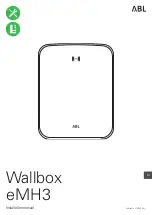
2-38
Safety system of your vehicle
Children Always in the Rear
Children under age 13 must always
ride in the rear seats and must
always be properly restrained to min-
imize the risk of injury in an accident,
sudden stop or sudden maneuver.
According to accident statistics, chil-
dren are safer when properly
restrained in the rear seats than in
the front seat.
Even with air bags,
children can be seriously injured
or killed.
Children too large for a
child restraint must use the seat belts
provided.
Most countries have child restraint
laws which require children to travel
in approved child restraint devices.
The laws governing the age or
height/ weight restrictions at which
seat belts can be used instead of
child restraints differs among coun-
tries, so you should be aware of the
specific requirements in your coun-
try, and where you are travelling.
Child restraint systems must be prop-
erly placed and installed in the rear
seat. You must use a commercially
available child restraint system that
meets the requirements of the Safety
Standards of your country.
Child restraint systems are generally
designed to be secured in a vehicle
seat by lap belt portion of a
lap/shoulder belt, or by a LATCH sys-
tem in the rear seats of the vehicle.
C
CH
HIIL
LD
D R
RE
ES
ST
TR
RA
AIIN
NT
T S
SY
YS
ST
TE
EM
M ((C
CR
RS
S))
Always properly restrain chil-
dren in the rear seats of the
vehicle.
Children of all ages are safer
when restrained in the rear seat.
A child riding in the front pas-
senger seat can be forcefully
struck by an inflating air bag
resulting in SERIOUS INJURY
or DEATH.
WARNING
TMa CAN-E 2.qxp 2/1/2019 4:13 PM Page 38
















































